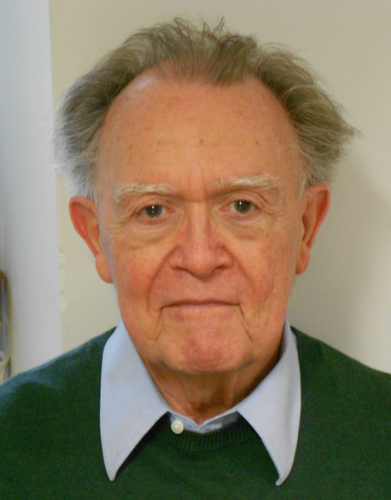Research
We are trying to understand how the ear and the brain construct the perceptions, or auditory images, that we hear when presented with the sounds of speech and music. When children and adults say the same words, the acoustic waves arriving at the ear are very different because of the difference in speaker size. Nevertheless, we hear the same speech message (the words). Speech recognition machines have great difficulty with this problem. The data from human listening experiments suggest that the ear and brain construct an internal representation of the speech that is “scale invariant,” that is, the same for people of all sizes. With colleagues in Japan, we have developed a mathematical transform to show how the cochlea and auditory neurons could make such a representation, and how the representation could assist in attempts to produce better speech recognition machines. With colleagues in the UK and Germany, we perform brain imaging experiments to establish where the different stages of the processing take place in the brain.
Collaborators
Prof T Griffiths, Institute of Neuroscience, Medical School, Newcastle University
Prof T Irino, Faculty of Systems Engineering, Wakayama University, Japan
Prof B Lütkenhöner, Münster University Hospital, Münster, Germany
Prof B Moore, Psychology Department, University of Cambridge, UK
Dr A Rupp, Department of Neurology, University of Heidelberg, Germany
Prof W Marslen-Wilson, Psychology Department, University of Cambridge, UK
Dr I Winter, PDN, University of Cambridge, UK
Publications
Patterson RD, Irino T, (2014), Size matters in hearing: How the auditory system normalizes the sounds of speech and music for source size, Springer Handbook of Auditory Research, 50, 417-440
Griffiths TD, Kumar S, Sedley W, Nourski K, Kawasaki H, Oya H, Patterson RD, Brugge JF, Howard MA, (2010), Direct recordings of pitch responses from human auditory cortex, Current Biology, 20, 1128–1132
Turner RE, Walters TC, Monaghan JJM, Patterson RD, (2009), A statistical, formant-pattern model for segregating vowel type and vocal-tract length in developmental formant data, J. Acoust. Soc. Am., 125.4, 2374–2386
Vestergaard MD, Fyson NRC, Patterson RD, (2009), The interaction of vocal characteristics and audibility in the recognition of concurrent syllables, J. Acoust. Soc. Am., 125.2, 1114–1124
Smith DRR, Patterson RD, Turner R, Kawahara H, Irino T, (2005), The processing and perception of size information in speech sounds, J. Acoust. Soc. Am., 117, 305-318
Krumbholz K, Patterson RD, Seither-Preisler A, Lammertmann C, Lütkenhöner B, (2003), Neuromagnetic evidence for a pitch processing centre in Heschl's gyrus, Cerebral Cortex, 13 765-772
Warren JD, Uppenkamp S, Patterson RD, Griffiths TD, (2003), Separating pitch chroma and pitch height in the human brain, Proc. Nat. Acad. Sci. , Vol. 100, No. 17. 10038-10042
Patterson RD, Uppenkamp S, Johnsrude I, Griffiths TD, (2002), The processing of temporal pitch and melody information in auditory cortex, Neuron, 36 767-776
Griffiths TD, Uppenkamp S, Johnsrude I, Josephs O, Patterson RD, (2001), Encoding of temporal regularity in the human brainstem, Nature Neuroscience, 4 633-637
Pressnitzer D, Patterson RD, Krumbholz K, (2001), The lower limit of melodic pitch, J. Acoust. Soc. Am., 109 2074-2084
Irino T, Patterson RD, (1997), A time-domain. level-dependent auditory filter: the gammachirp, J. Acoust. Soc. Am., 101, 412-419
Patterson RD, Allerhand M, Giguere C, (1995), Time-domain modelling of peripheral auditory processing: A modular architecture and a software platform, J. Acoust. Soc. Am., 98, 1890-1894
Teaching and Supervisions
Part II. Module 6, Central Auditory Processing


